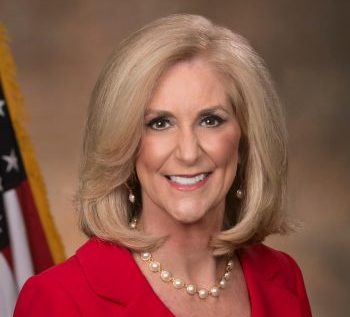
Studio portrait of Sid Salter. (photo by Beth Wynn / © Mississippi State University)
By: Sid Salter
As the midterm elections approach, why isn’t their more interest in the approaching U.S. Social Security and Medicare policy abyss?
In 2020, Social Security provided retirement, disability and survivor benefits to some 416,500 Mississippians with monthly benefits averaging $1,420 per month or $17,161 annually. That means that Social Security injects $7.147 billion into Mississippi’s economy – substantially more than the state-funded portion of the state budget.
Medicare, the federally sponsored health insurance program for older Americans, served some 604,000 Mississippians as their primary source of health care finance.
The Social Security Trustees Report projects that the 86-year-old program can only meet its obligations to retirees until 2035 – after which Congress must either shore up the program’s finances or see benefit reductions of between 21% to 27%.
Medicare is projected to only be able to meet its obligations through 2026 without congressional intervention and without it, scheduled benefits will be reduced by 10%. In the wake of COVID, the problems plaguing health care provision and delivery are such that money is only one of a myriad of challenges.
Inflation and supply chain pressures are hammering health care costs. And the reality of how Americans pay for health care is hammering governments at both the federal and state levels.
One simple set of facts bode ominously for Social Security, Medicare (and Medicaid) and government officials seeking to solve these challenges.
First, Social Security and Medicare constitute north of 41% of all federal expenditures. Second, the senior demographic of those eligible for the programs is growing and science is helping them live longer.
Third, in 1950 there were 120 workers paying into the program for every one retired worker drawing a pension. By 2035, it is projected that there will be only 2.3 workers paying into the program for each retiree drawing a pension.
Is it any wonder that the American Association of Retired Persons report that some 57 percent of Americans aren’t confident in the future of Social Security? Last month, North Carolina financial planner Michael Baughman told an AARP analyst: “Those who tend to distrust the government have less faith that Social Security will be there for them in its current form. And as you work with younger clients, there is even less confidence.”
All the way back to the creation of the program during the administration of Franklin D. Roosevelt, Social Security was never intended as the sole support of retired workers. It was created as a safety net, a minimum baseline of economic support for the elderly.
The notion of retirees easing into their retirement years on the “three-legged stool” of personal savings, a strong pension from the employer, and Social Security benefits is for many of retirement age becoming a four-legged stool based on part-time or full-time work in so-called retirement years.
And the pension leg of the old retirement stool has wobbled as state and private pension plans have struggled and increasing pressure has been put on workers for investment. As one financial analyst reading this trend observed, the new retirement three-legged stool “is you, you, and you.”
Inflation, economic upheavals in the wake of global pandemic and the resulting supply chains impacts on the global economy have been critically impactful on the reasonable futures of the Social Security and Medicare programs. In states with endemic poverty like Mississippi, that impact is heightened.
What is certain, as pointed out in a 2021 Wall Street Journal editorial headlined “It’s the Entitlements, Stupid!”: “Entitlements always grow over time, as politicians add benefits and expand eligibility.”
That, in one sentence, is the story of what happened to FDR’s vision of a stable Social Security leg of the old “three-legged stool” for retirees in America that is now a program that is unsustainable without major changes.











